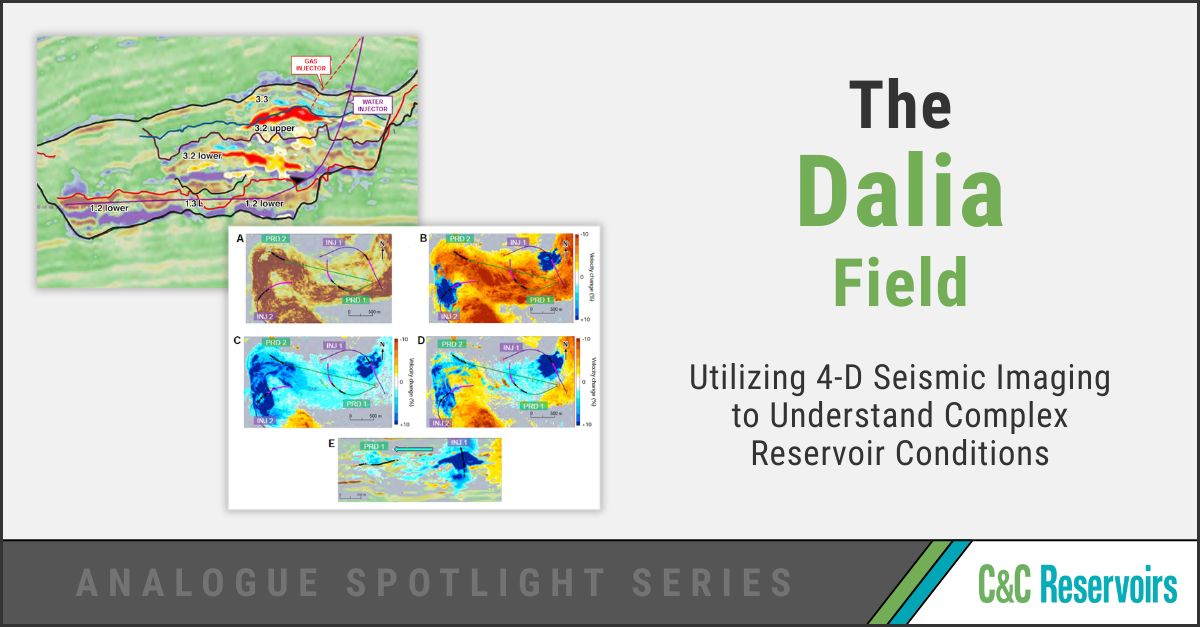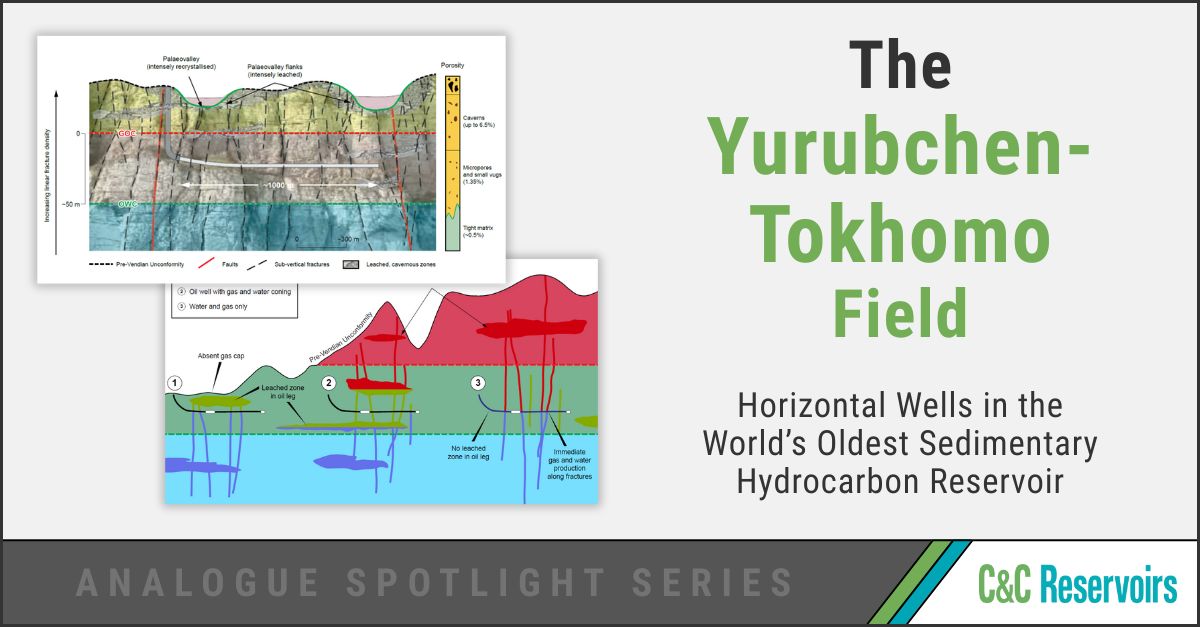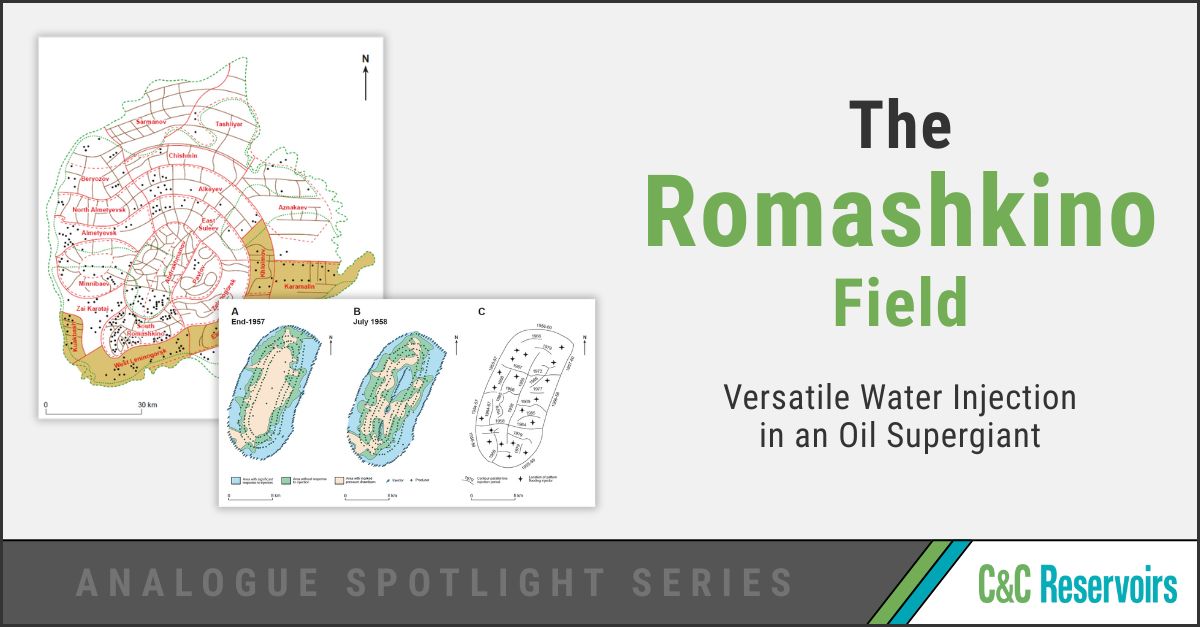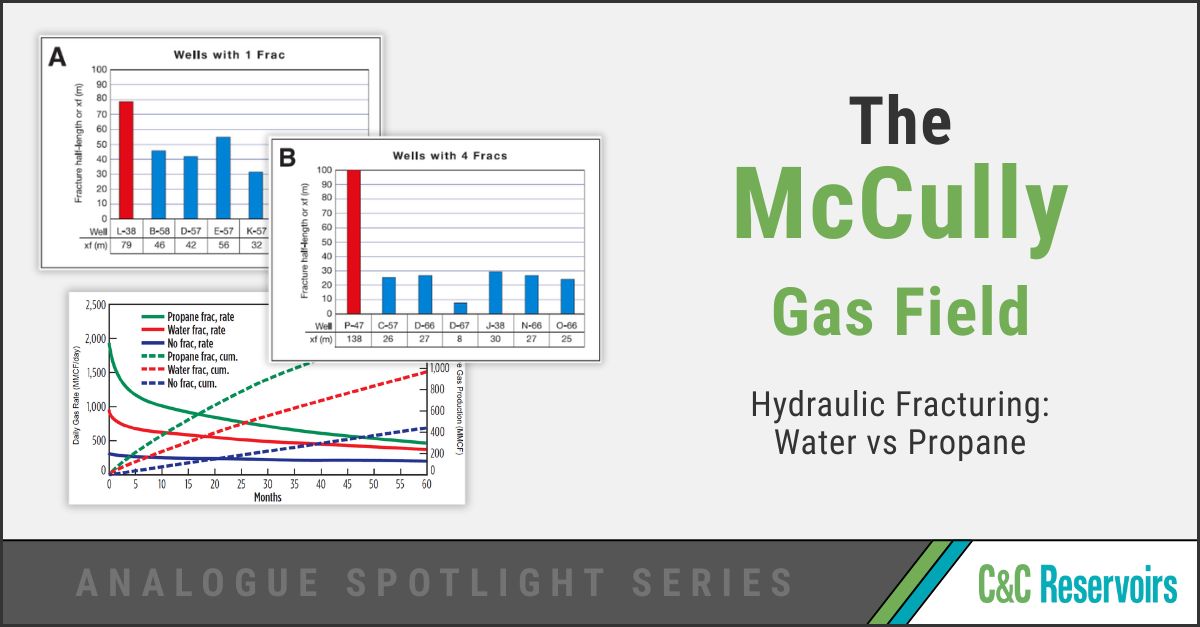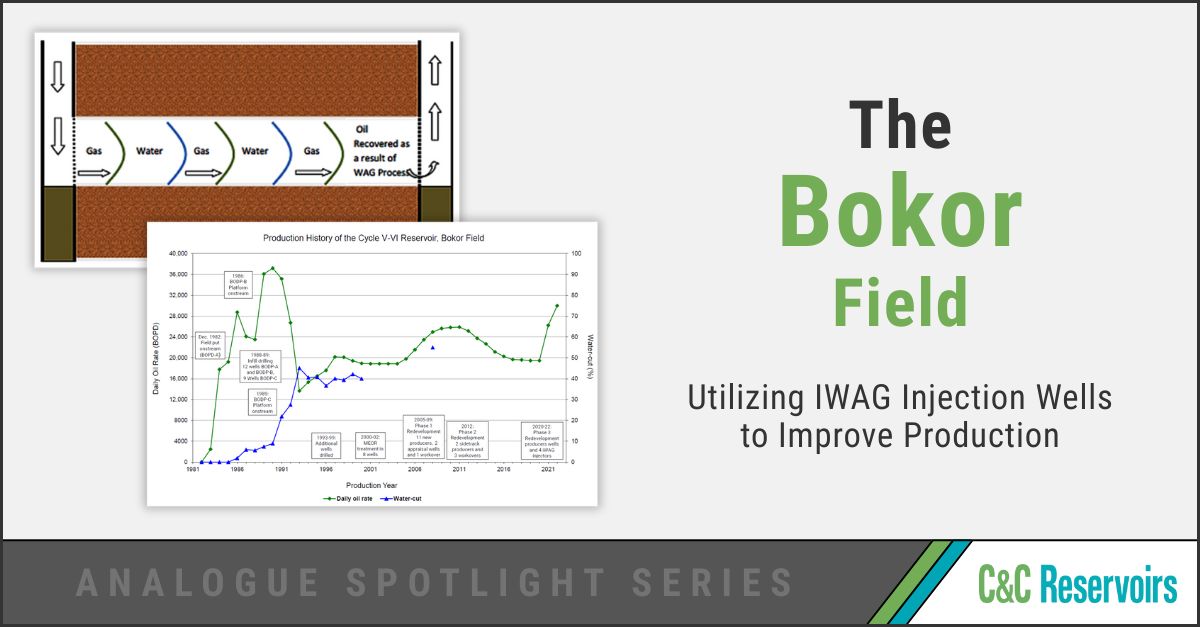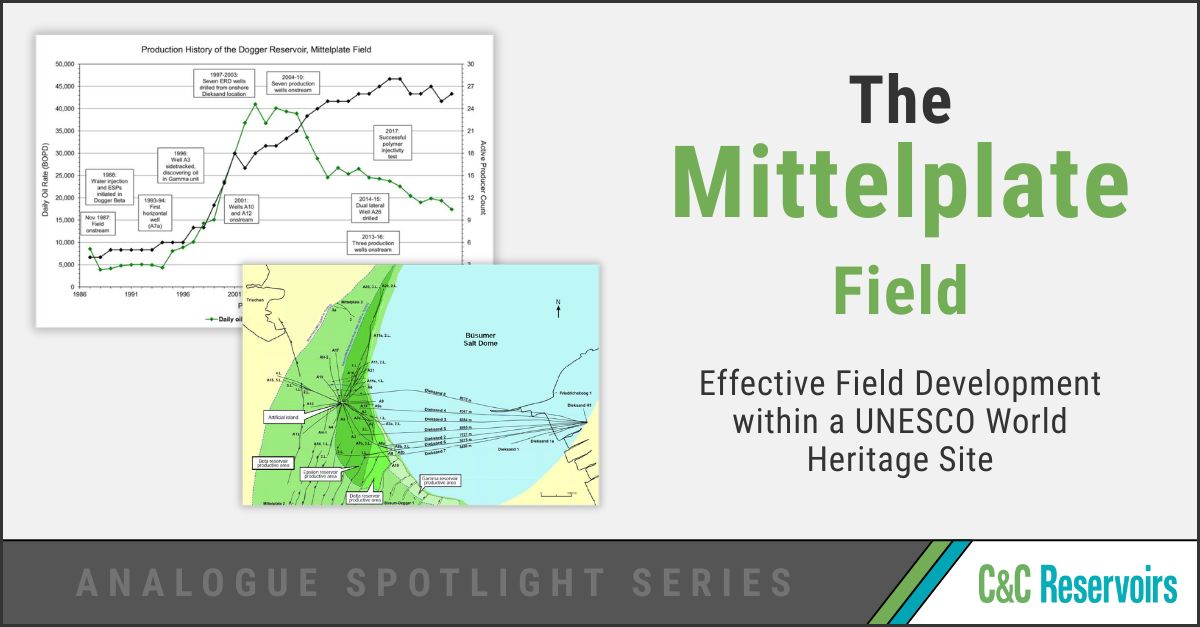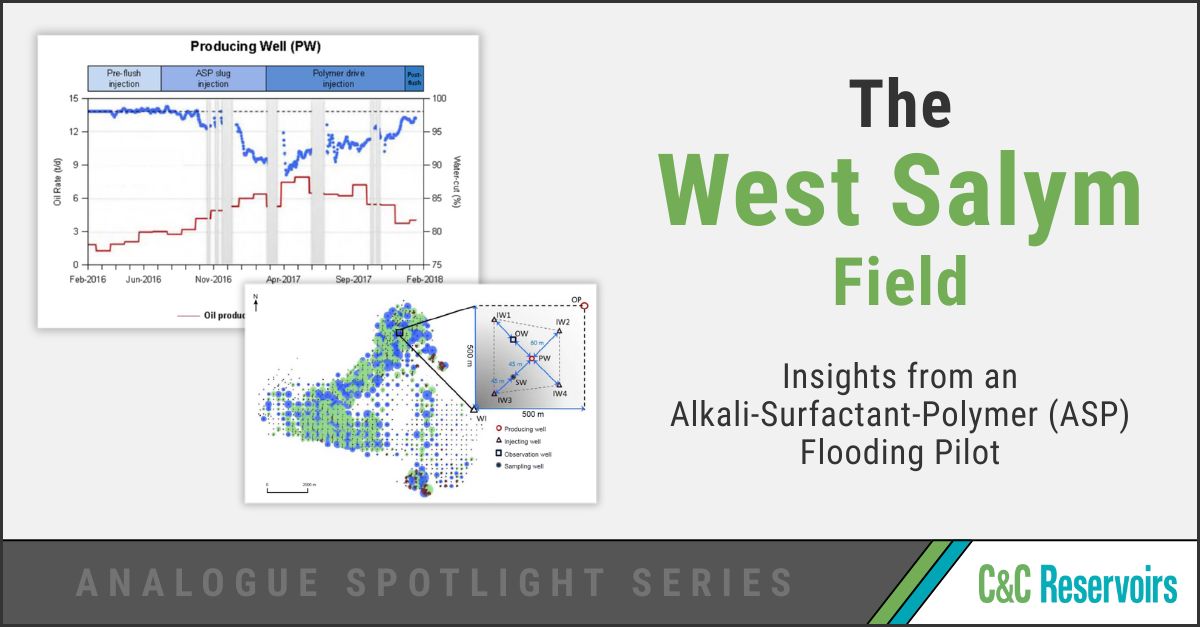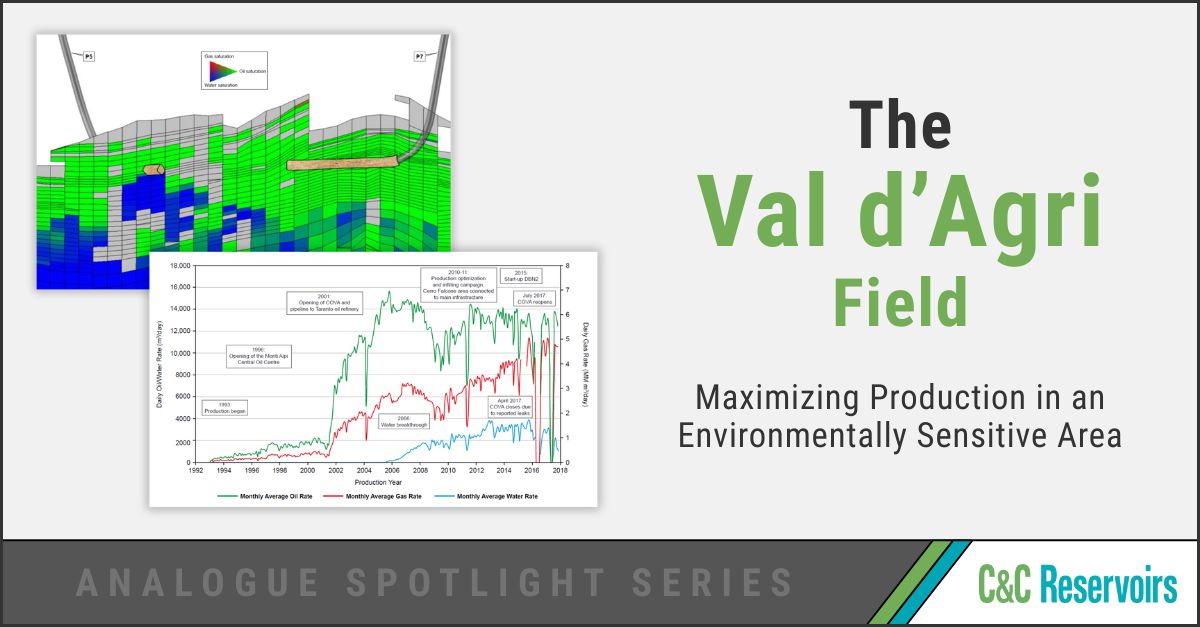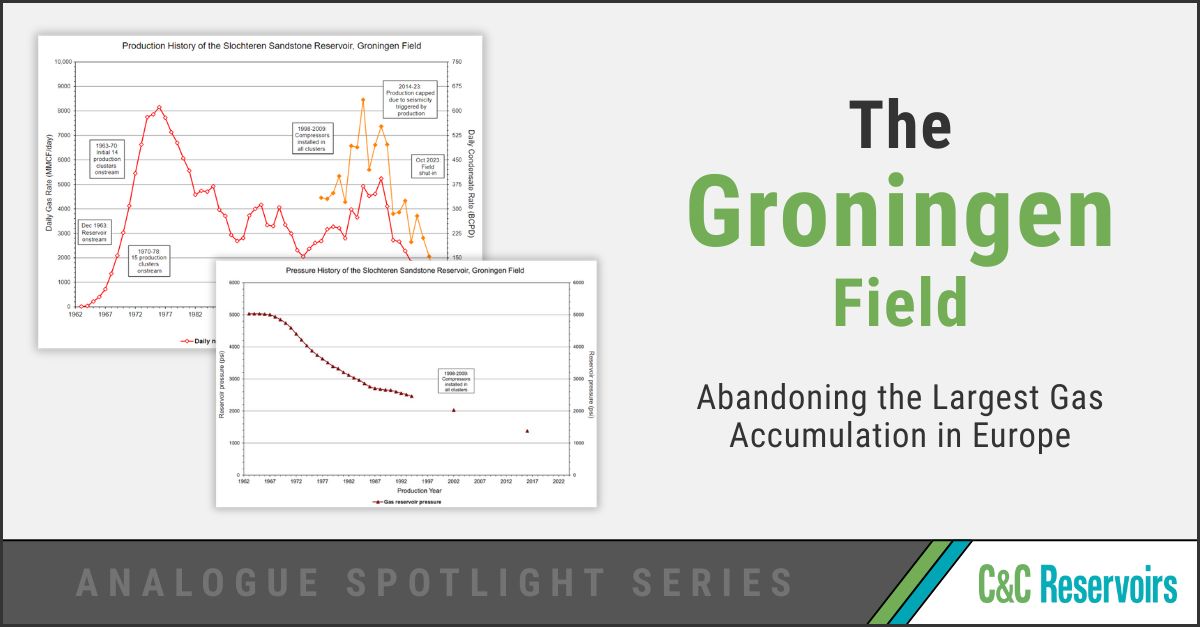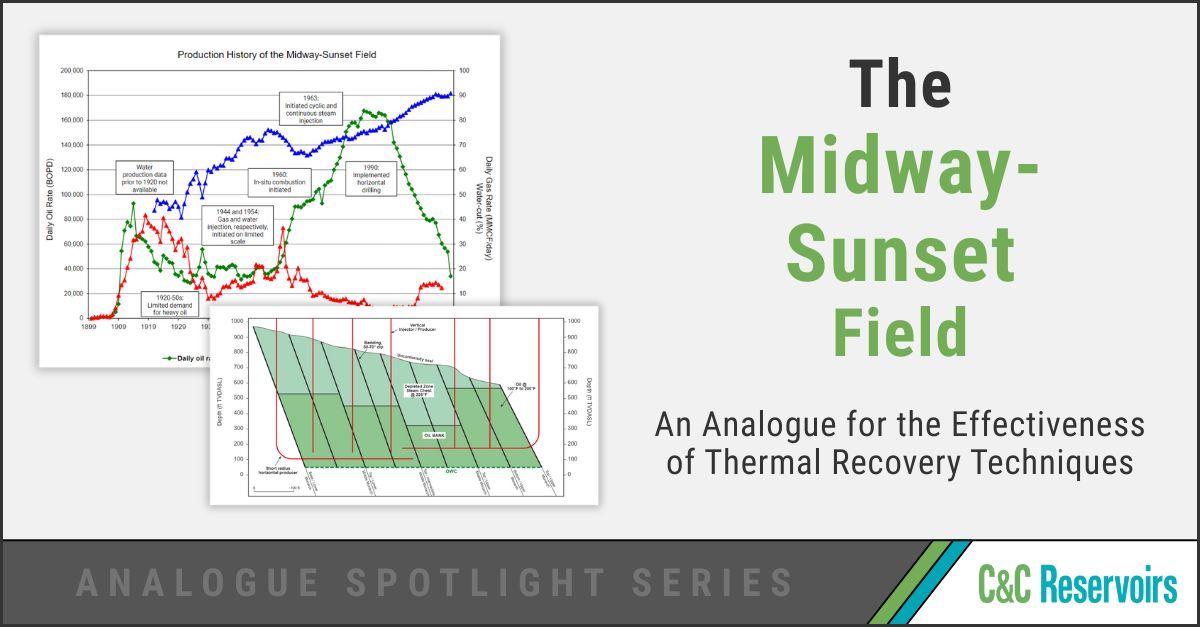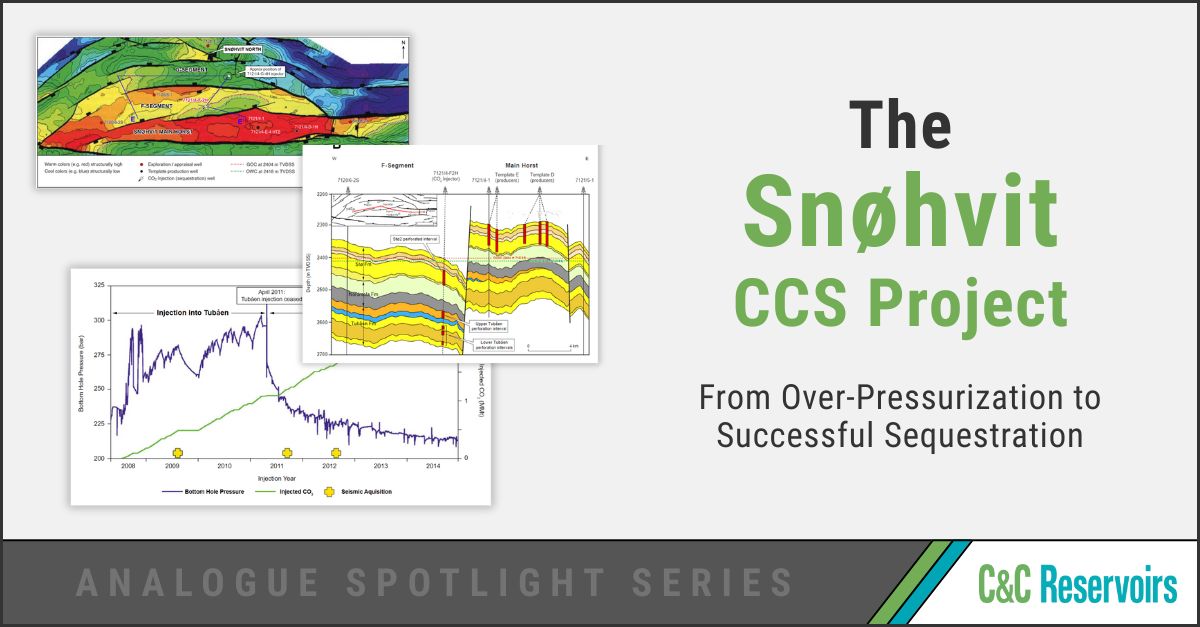C&C Reservoirs‘ Analogue Spotlight series offers an in-depth exploration of oil and gas fields from across the globe, showcasing the unique features and characteristics that set each one apart. Through these insightful spotlights, we distill complex fields into a single, key takeaway, providing valuable knowledge that can be applied to your own projects. Each of our Analogue Spotlights highlights the immense value that can be gained by examining global oil and gas analogues, offering just a glimpse into the wealth of expertise available in DAKS™.
Our series taps into over 150 years of collective experience in global E&P activities, offering unparalleled access to industry best practices, innovative solutions, and valuable lessons learned throughout the history of the sector. With DAKS™, you have the opportunity to leverage this vast knowledge base to drive success in your own operations, empowering you to make more informed decisions, reduce risk and uncertainty, and overcome the challenges that are unique to the ever-evolving world of oil and gas.
The Dalia Field – Utilizing 4-D Seismic Imaging to Understand Complex Reservoir Conditions
The Dalia Field Analogue Spotlight Located offshore Angola, The Dalia field produces hydrocarbons from Miocene turbidites of the Malembo formation. The reservoir’s intricate structure consists of channel ...
The Yurubchen-Tokhomo Field – Horizontal Wells in the World’s Oldest Sedimentary Hydrocarbon Reservoir
The Yurubchen-Tokhomo Field Located in a remote part of SE Siberia, the giant Yurubchen-Tokhomo Field, which has been on production since 1987, hosts oil and gas ...
The Romashkino Field – Versatile Water Injection in an Oil Supergiant
The Romashkino Field Romashkino is the largest field in the Volga-Ural Basin, with a STOIIP of 38.8 BBO and EUR of 23.3 BBO. The main reservoirs are ...
The McCully Gas Field – Hydraulic Fracturing: Water vs Propane
The McCully Gas Field Located in New Brunswick, eastern Canada, McCully was Canada’s first unconventional gas field. To achieve commercial viability, hydraulic fracturing was essential. However, ...
The Bokor Field – Utilizing IWAG Injection Wells to Improve Production
The Bokor Field Production from the Bokor Field, offshore Malaysia, began in 1982, 15 years after its discovery. STOIIP and EUR were initially underestimated due to disappointing ...
The Mittelplate Field – Effective Field Development within a UNESCO World Heritage Site
The Mittelplate Field Located within the UNESCO World Heritage Site of the Elbe Estuary, the Mittelplate oil field is Germany’s most productive field. However, the field’s location ...
The West Salym Field – Insights from an Alkali-Surfactant-Polymer (ASP) Flooding Pilot
The West Salym Field The West Salym Field, located in remote western Siberia, produces oil from the Lower Cretaceous AS10-11 sandstones. Water injection began in 2005, ...
The Val d’Agri Field – Maximizing Production in an Environmentally Sensitive Area
The Val d'Agri Field Hidden beneath a mountainous national park, the Val d’Agri Field in Italy hosts hydrocarbons within Apulian platform carbonates. Despite having a significant STOIIP ...
The Groningen Field – Abandoning the Largest Gas Accumulation in Europe
The Groningen Field With a GIIP of 113.2 TCF, the Groningen Field hosts the largest gas accumulation in Europe. However, the field is due to be ...
The Ubit Field – Utilizing New Data to Reveal Hidden Potential
The Ubit Field Located off the coast of Nigeria in the eastern Niger delta, the Ubit Field boasts a STOIIP of 2400 MMBO. Despite its great potential, ...
Midway-Sunset Field – An Analogue for the Effectiveness of Thermal Recovery Techniques
The Midway-Sunset Field Located in the southern San Joaquin Basin of California and discovered in 1894, the Midway-Sunset Field is one of the largest in the ...
The Snohvit CCS Project – From Over-Pressurisation to Successful Sequestration
The Snøhvit CCS Project From its initiation in 2008 to 2019, the Snøhvit CCS project successfully stored 6.5 MMt of CO2 within the Tubåen (1.1 MMt) and ...

